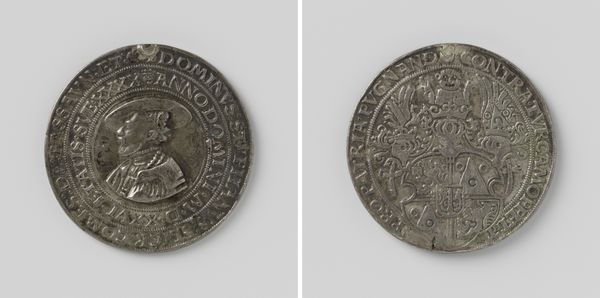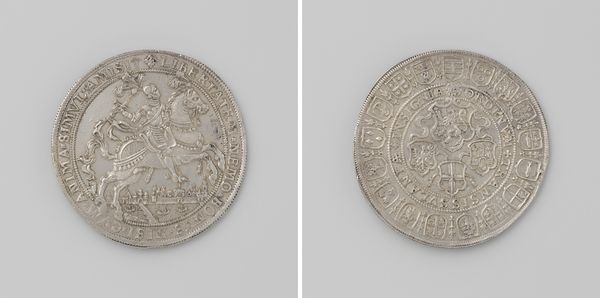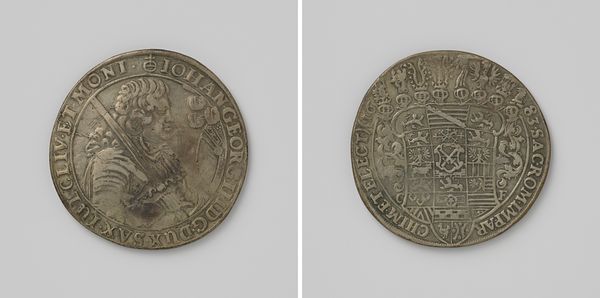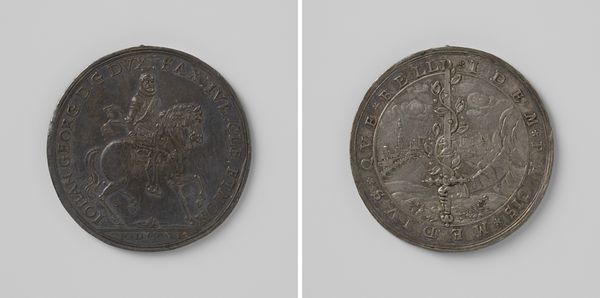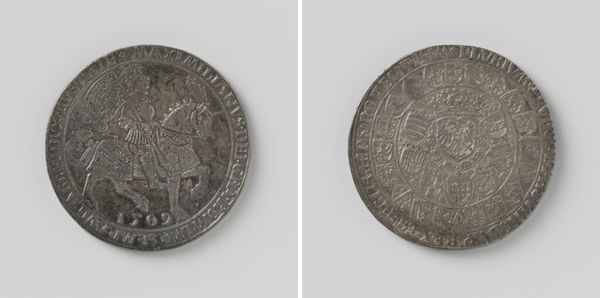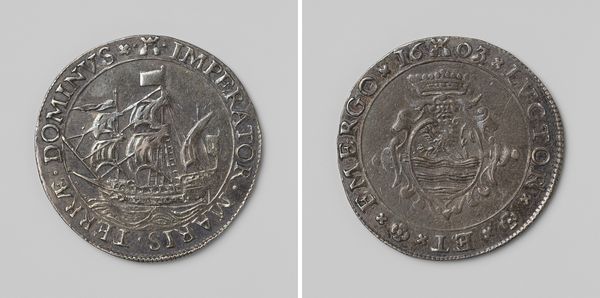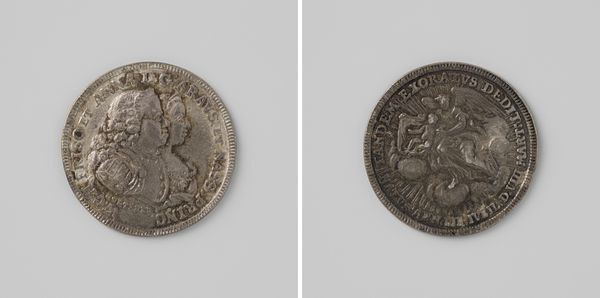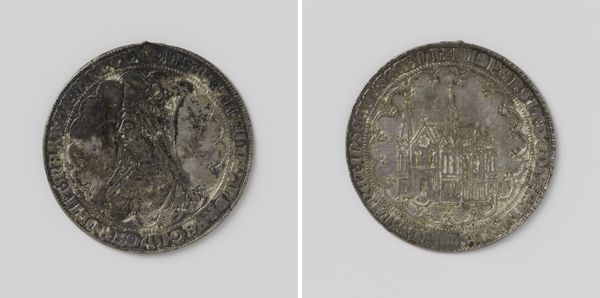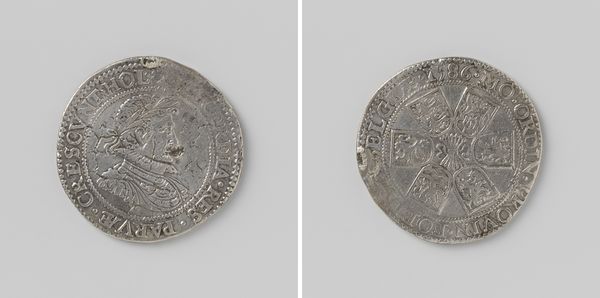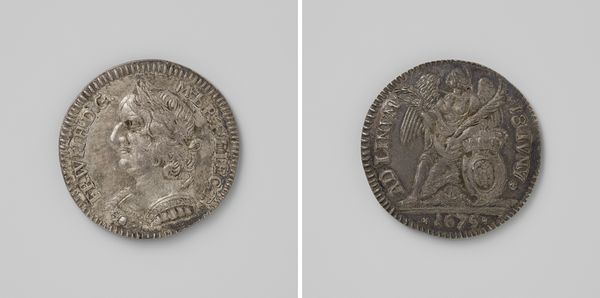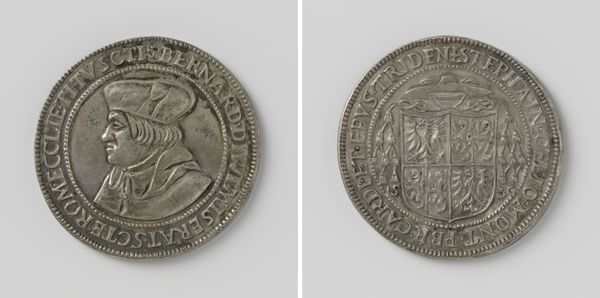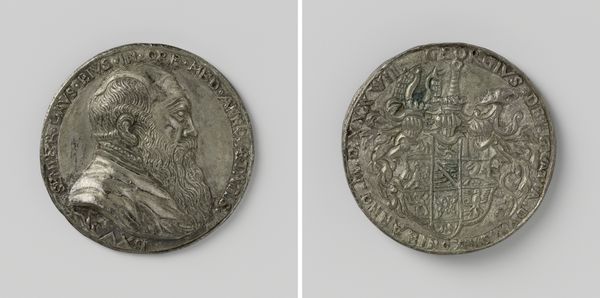
Johan Frederik de Grootmoedige, keurvorst van Saksen en Filips de Grootmoedige, landgraaf van Hessen 1543
0:00
0:00
metal, relief, sculpture
#
metal
#
sculpture
#
relief
#
11_renaissance
#
sculpture
Dimensions: diameter 5.2 cm, weight 53.53 gr
Copyright: Rijks Museum: Open Domain
Editor: This interesting metal relief from 1543, titled "Johan Frederik de Grootmoedige, keurvorst van Saksen en Filips de Grootmoedige, landgraaf van Hessen" by an anonymous artist, seems almost like currency. The details feel very worn from handling, or from the casting process itself, creating a flattened almost ghostly texture. What stands out to you about it? Curator: What immediately catches my attention is the intentional use of metal, and likely a mold to mass produce these medallions, moving away from unique, hand-wrought portraiture of the era, no? The inherent value of metal ties it to economic and social systems. I wonder about the scale of production of these metal medallions - was this a conscious attempt to disseminate power or create a sort of widespread propaganda? Editor: That's fascinating – I hadn't thought about the reproduction aspect impacting its meaning. So, instead of simply seeing portraits of important figures, we're observing something designed for distribution, potentially to a broad audience? How might the material itself, metal, affect the reading of the image? Curator: Exactly. The choice of metal is key. Its durability speaks to a desire for longevity, while its potential for being melted down connects to a broader economic framework. It is important to reflect that metals signified wealth and status in Renaissance Europe. Do the coats of arms hold symbolic significance? What do we know about how these men are being depicted, and how that symbolism may represent power, land and class? Editor: The coat of arms is interesting given the detail on each side. The way the figures are embellished with those details definitely speaks to the intended audience knowing about these men. I never thought about it like this – the economic value tied to its mass distribution… Curator: Consider then: could these objects been tools for solidifying their status and extending their influence in tangible, consumable form? Examining art through its materials pushes us beyond aesthetics, inviting an understanding of its purpose within a specific economy. Editor: It does really shift perspective. It's more than just commemorative; it’s almost a piece of currency, or propaganda that’s interwoven with Renaissance Europe’s social and economic fabric. Curator: Precisely. Examining the medium used to deliver a message offers an avenue to understand historical context and meaning.
Comments
No comments
Be the first to comment and join the conversation on the ultimate creative platform.
